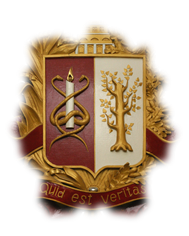Issue: 2016, Vol. 21, No. 1
THE PECULIARITIES OF DENERVATION SYNDROME OF REINNERVATED LIMB IN RATS EXPOSED TO LOCAL RESONANCE VIBRATION (AN EXPERIMENTAL STUDY)
- Keywords
- denervation syndrome, reinnervated limb, local resonance vibration, experiment
- Abstarct
- Objective - to study the features of the denervation syndrome course in the tissues of reinnervated limb in rats under the influence of local resonance vibration. Materials and methods. 34 white outbred male rats aged 2-3 months, weight 200-300 g were enrolled in the study; they underwent the intersection of sciatic nerve, its epiperineural suture. 17 rats formed the basic group; these animals were exposed to the local vibration resonance influence on the damaged limb (it started on the 7th day after the operation and continued within 10 days by 10 minutes), 17 rats formed the control group, they were not exposed to vibration. The presence of trophic ulcers, claw growth anomalies (thin, fragile or their absence), dryness and peeling of pelma skin surface, “loose-hanging diseased limb” symptom, “fan” symptom, pain stimulus reaction were evaluated on 14, 28, 35, 42, 49 and 56 days after the operation. Results. Vibration resonance influence allowed to decrease the incidence of claw fall to 12% and increased their growth in rats of experimental group. Peeling, dryness of pelma skin surface, hyperemia zones in rats of basic group were revealed more rarely in comparison with the control group. Under the influence of local resonance vibration neurotrophic ulcers were formed three times more rarely. The disappearance of loose-hanging diseased limb symptom was proved to be more rapid in the animals of the basic group and “fan” symptom was restored more rapidly. Reaction to pain in rats after vibration exposure was manifested earlier than in the control group. Conclusions. In rats with sciatric nerve injury and following epineural suture vibration resonance influence was conducive to the improvement of reparative processes in superficial tissues, resulted in more rapid restoration of nerve function: first signs of regeneration were appeared upon the average by 4 weeks earlier than in the control group. At the end of the experimental study full restoration of reinnervated limb function was observed in 75% animals from the experimental group and in 25% animals from the control group.


 Карпова, Писарев
Карпова, Писарев